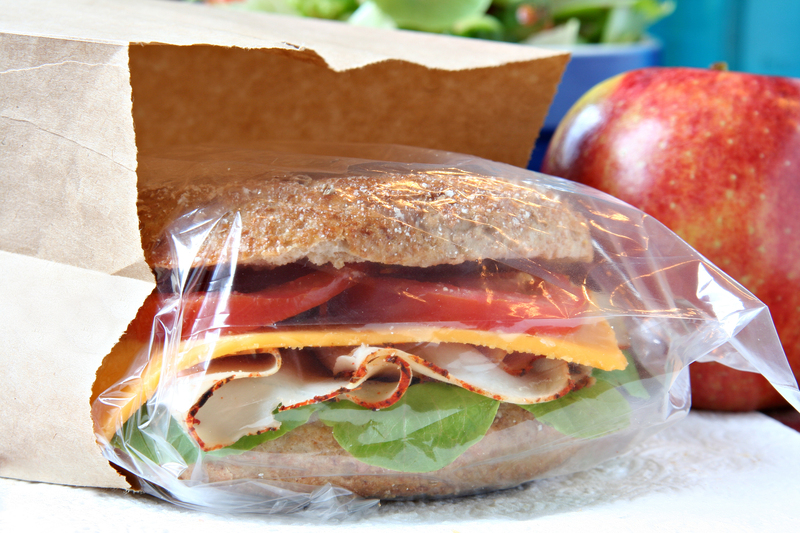Learn the Best Practices for Freezer Storage During Off-Season
Posted on 16/06/2025
Learn the Best Practices for Freezer Storage During Off-Season
Are you looking to maximize the shelf-life and quality of your food when the growing or holiday season is over? Understanding freezer storage best practices during the off-season can save you money, prevent food waste, and ensure you always have delicious ingredients at your fingertips. In this comprehensive guide, we'll explore how to utilize your freezer effectively, preserve food safely, and organize your space for maximum efficiency during the months when fresh produce is less available.

Why Off-Season Freezer Storage Matters
Freezing is one of the most effective methods for preserving the flavor, nutrition, and texture of food for extended periods. During the off-season--whether winter for fresh growers or post-holiday for cooks--your freezer becomes an essential tool. Smart off-season freezer storage means you're less dependent on expensive, low-quality out-of-season produce, and more empowered to enjoy home-cooked meals year-round.
The Benefits of Proper Freezer Storage
- Reduces food waste: Extend the lifespan of leftovers, bulk purchases, and garden harvests.
- Saves money: Buy in bulk or during peak season, then freeze for later use.
- Improves convenience: Have ready-to-cook ingredients or meals on hand when you need them.
- Maintains freshness: Lock in nutrients and flavor, avoiding the decline in quality that comes with aging produce.
Understanding What Foods Freeze Best
Not all foods are created equal when it comes to freezing. Before you fill your freezer with leftovers or seasonal produce, it's important to understand which foods are freezer friendly and which are not.
Foods That Freeze Well
- Fruits (berries, sliced peaches, mangoes, bananas)
- Vegetables (blanched broccoli, carrots, corn, peas)
- Cooked meats and poultry
- Soups, stews, and casseroles
- Bread, bagels, and baked goods
- Cheese (shredded or in blocks, some varieties)
- Herbs (chopped and frozen in oil or water)
- Homemade sauces and stocks
Foods That Do Not Freeze Well
- High-water-content vegetables (lettuce, cucumber)
- Cream-based sauces (can separate after freezing)
- Soft cheeses (ricotta, cottage cheese may alter in texture)
- Fried foods (lose their crispiness upon reheating)
- Eggs in the shell (expanding liquid can crack shells)
- Yogurt (texture changes, becomes grainy)
Preparing Foods for Off-Season Freezer Storage
Proper preparation is a key pillar of off-season freezer storage best practices. Follow these steps for best results:
1. Clean and Portion Foods
- Rinse fruits and vegetables thoroughly.
- Trim, peel, and chop into usable sizes.
- Portion meats, fish, and baked goods in meal-size amounts to avoid thawing more than you need.
2. Blanching Vegetables
Blanching is the process of briefly boiling vegetables, then plunging them into ice water. This step is vital for many vegetables before freezing because it stops enzyme action, preserves color and texture, and prevents loss of nutrients.
- Boil vegetables for a short time (2-4 minutes, depending on the type).
- Immediately immerse in ice water to halt cooking.
- Drain thoroughly to prevent ice crystals from forming.
3. Packaging for Long-Term Storage
Air exposure is the enemy of frozen food. Proper packaging helps prevent freezer burn and preserves taste and quality.
- Use airtight containers or heavy-duty freezer bags.
- Remove as much air as possible before sealing.
- Wrap items like bread and baked goods in foil or plastic wrap, then place in a sealed freezer bag for extra protection.
- For liquids, leave space at the top of containers to allow for expansion.
4. Label and Date Everything
Always label packages with the contents and freezing date using freezer-safe markers or sticky labels. This helps you keep track of what you have and ensures you use the oldest items first.
Organizing Your Freezer for Off-Season Storage
A cluttered freezer leads to forgotten food, waste, and inefficient use of space. Freezer organization is essential for quick retrieval and inventory management.
Effective Freezer Organization Tips
- Group similar items together (vegetables, fruits, meat, baked goods).
- Use plastic bins or baskets for small or loose packages.
- Store frequently used items in easy-to-reach areas.
- Keep a running inventory list taped to the freezer door or use a freezer management app.
- Use the First-In, First-Out (FIFO) method: Place newly frozen items at the back and move older items to the front.
- Make use of vertical space with stackable containers or wire shelves.
Best Practices for Maintaining Freezer Quality
Even with careful preparation, poor maintenance can reduce the quality of your frozen food. Here's how to keep your freezer running at its best during the off-season and beyond.
1. Monitor Temperature Regularly
*Maintaining a consistent temperature of 0?F (-18?C) or below is critical*. Invest in a freezer thermometer for accuracy--fluctuations can compromise food safety and quality.
2. Avoid Overloading
While a well-stocked freezer is more energy efficient, don't stuff it to the brim. Allow enough space for air to circulate so cold air can reach all foods evenly.
3. Check Door Seals
Worn-out door gaskets can let warm air in, raising the freezer temperature and accelerating freezer burn. Clean and check seals regularly; replace if necessary.
4. Defrost Regularly
If your freezer is not frost-free, periodic manual defrosting is necessary. Thick ice buildup can hinder performance and reduce storage space.
5. Don't Refreeze Thawed Foods
Once food has fully thawed, consuming it within a day or two ensures safety and quality. Refreezing can lead to texture deterioration and increased risk of bacteria.
Extending Shelf-Life: How Long Can Foods Stay Frozen?
Even at zero degrees, no food lasts forever. Being aware of recommended freezer storage times ensures you enjoy the best taste and nutritional value. Below is a handy guide for common items:
- Fruits and vegetables: 8-12 months
- Chicken or turkey (whole): Up to 1 year
- Chicken or turkey (pieces): 9 months
- Ground meat: 3-4 months
- Steaks and chops: 4-12 months
- Fish: 3-6 months (fatty fish less time than lean)
- Bread and baked goods: 3-6 months
- Soups and stews: 2-3 months
For a full listing, the U.S. Department of Agriculture Food Safety and Inspection Service offers a detailed chart outlining optimal freezing times for various foods.
Managing Freezer Burn and Quality Loss
Freezer burn occurs when food is exposed to air, leading to dry spots, off flavor, and loss of nutrients. While not dangerous, it's unappetizing and diminishes food quality. Here's how to minimize it:
- Use airtight, moisture-proof packaging.
- Squeeze out extra air before sealing bags or containers.
- Don't overload freezer--ensure proper air circulation.
- Reduce temperature fluctuations by minimizing the number of times you open the freezer door.
- Always label items and use older ones first to avoid forgotten, past-prime foods.
What To Do With Freezer-Burned Food
If a small portion of food is freezer-burned, trim off affected areas after thawing. For more significant burn, turn foods into soups or stews where off textures are less noticeable.
Eco-Friendly and Cost-Saving Tips for Off-Season Freezer Storage
Want to make your off-season freezer storage more eco-friendly and reduce energy and food waste?
- Freeze in reusable containers: Glass jars (leave head space), silicone bags, and sturdy plastic containers reduce plastic waste.
- Batch freeze meals: Cook and store multiple servings to cut down on individual packaging.
- Organize energy efficient cycles: If planning an extended absence, minimize the number of times you open your freezer.
- Use up odds and ends: Combine scraps of produce or meats into soups or stocks before they lose quality in the freezer.
- Keep your freezer full: A well-packed freezer holds cold better than an empty one--if not full, fill unused space with containers of ice.
Thawing Frozen Foods Safely
Proper thawing is as important as freezing. The safest methods to thaw frozen food include:
- In the refrigerator (best for large cuts and prepared dishes, requires advance planning)
- In cold water (ensure packaging is leak-proof, change water every 30 minutes)
- In the microwave (for quick thawing, but cook immediately after)
Never thaw food at room temperature as this encourages bacterial growth.

Frequently Asked Questions About Off-Season Freezer Storage
Can I freeze food that is near its expiration date?
Yes, but ensure the food is still safe and hasn't begun spoiling--freezing preserves quality at the state it was frozen, not after spoilage has started.
How can I fit more food in my freezer?
Flat-pack items in resealable bags so they can be stacked, use bins for small packages, and maximize vertical space by stacking containers.
What are the signs that frozen food has gone bad?
Excessive ice crystals, shriveled/dried look, strange odors upon thawing, and sour or rancid taste mean it's better not to consume.
How do I prevent flavors from mixing in the freezer?
Double-wrap strong-smelling items (like fish), ensure airtight seals, and separate items whenever possible.
Conclusion: Mastering Off-Season Freezer Storage
When you learn the best practices for freezer storage during the off-season, you gain control over your food budget, nutrition, and menu planning. From understanding what foods freeze best, to prepping, packaging, and organizing for peak efficiency, these simple steps ensure your freezer supports your household year round.
By adopting smart off-season freezer storage techniques, you'll not only reduce your grocery bills and food waste, but also enjoy the convenience and satisfaction of having delicious, high-quality meals at your fingertips--no matter the season.
*Now is the perfect time to reorganize, refresh, and restock your freezer using these proven methods. Your future self will thank you!*







